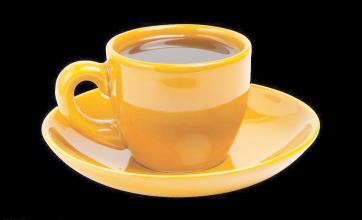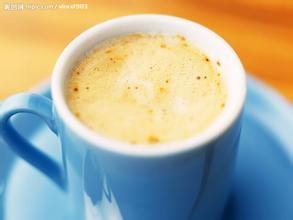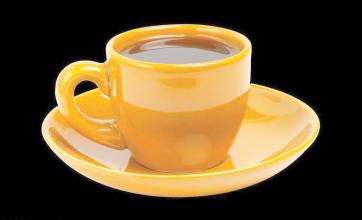The flavor and taste of Cuban crystal coffee introduces the characteristics of Cuban coffee beans.
Crystal mountain coffee is very precious. There are two main reasons for this. The first reason is the economic sanctions imposed by the United States against Cuba, which do not allow Cuba to import goods. The second reason is that Cuban coffee beans are currently mostly bought by French and Japanese markets, especially Japan, so it is difficult to buy coffee beans directly from Cuba today. Despite this, Cuban coffee is still comparable to Jamaica Blue Mountain coffee in the hearts of coffee lovers around the world.
Crystal Mountain coffee beans are typical island beans, taste clean and delicate, slightly sour, not strong but very persistent, and with sweet melon fragrance. The coffee brewed from it has a rare and perfect taste: bitter with aroma, rich and smooth taste. It has a slightly wine-like bitterness and a hint of sweetness, and even a hint of smoke, fine and smooth, refreshing and elegant. Many flavors mixed together and matched almost perfectly.
To brew Crystal Mountain coffee, it is best to use a hand-brewed or American coffee machine, the water temperature is below 85 ° C, the fire is not too large, and the time is not too long. When tasting coffee, because it is more fragrant, so you can put more milk, but less sugar, usually two or three spoons (coffee cup spoons) is just right. You will be impressed by its unique taste. In Cuba, coffee beans are mostly picked by hand. During the ripening period of coffee beans, they are picked about once every half month. During or after picking, coffee beans are sorted to eliminate immature and bad beans to ensure coffee quality. Cubans usually treat coffee beans in two ways--sun and water. Solarization is the simplest, cheapest, and most traditional way to treat coffee. It involves drying the coffee fruit in the sun, but not fermenting it. The average drying time is about four weeks. The washing law allows the aroma of fruit to enter the coffee beans more, thus adding a coarse mineral fruit aroma to coffee. In 1748, coffee was introduced to Cuba by Domica, and coffee cultivation began in Cuba. The fertile soil, humid climate and abundant rainfall in Cuba make it a natural treasure for coffee cultivation. Suitable natural conditions provide a favorable natural environment for the growth of coffee trees, where coffee is well planted and developed. In Cuba, coffee cultivation is regulated by the State. Cuba's best coffee-growing areas are located in the Central Mountains. Because this area is not only planted with coffee, but also produces precious minerals such as quartz and crystal, it is also known as Crystal Mountain. Currently, Crystal Mountain Coffee is synonymous with premium Cuban coffee. Crystal Mountain Coffee is characterized by its large size and bright green color

Important Notice :
前街咖啡 FrontStreet Coffee has moved to new addredd:
FrontStreet Coffee Address: 315,Donghua East Road,GuangZhou
Tel:020 38364473
- Prev

El Salvador coffee bean flavor taste manor production area introduction of El Salvador coffee bean hand-brewed boutique coffee
El Salvador's coffee accounts for 40% of the country's exports, and it is usually picked in November, December and January-March of the following year. The export of raw beans lasts almost all year round. Coffee is produced in seven of the country's 14 provinces, with the largest number in the northwestern provinces of chalatenango and santa ana. The coffee produced in El Salvador is 100% Arabica, of which 68% is
- Next

The flavor and taste of Nicaraguan boutique coffee beans the manor area introduces the characteristics of Nicaraguan coffee.
Coffee is Nicaragua's main export. According to the president of the Nicaraguan Coffee Farmers' Federation, due to the poor harvest of coffee in Nicaragua's Pacific region, the country's total coffee production in 1998 may be 12% lower than that in 1997. In the coffee year of 1997 and 1998, Nicaragua harvested 1.422 million bags of coffee (each bag of 46kg), which has been producing 1% of coffee in the past 14 years.
Related
- Detailed explanation of Jadeite planting Land in Panamanian Jadeite Manor introduction to the grading system of Jadeite competitive bidding, Red bid, Green bid and Rose Summer
- Story of Coffee planting in Brenka region of Costa Rica Stonehenge Manor anaerobic heavy honey treatment of flavor mouth
- What's on the barrel of Blue Mountain Coffee beans?
- Can American coffee also pull flowers? How to use hot American style to pull out a good-looking pattern?
- Can you make a cold extract with coffee beans? What is the right proportion for cold-extracted coffee formula?
- Indonesian PWN Gold Mandrine Coffee Origin Features Flavor How to Chong? Mandolin coffee is American.
- A brief introduction to the flavor characteristics of Brazilian yellow bourbon coffee beans
- What is the effect of different water quality on the flavor of cold-extracted coffee? What kind of water is best for brewing coffee?
- Why do you think of Rose Summer whenever you mention Panamanian coffee?
- Introduction to the characteristics of authentic blue mountain coffee bean producing areas? What is the CIB Coffee Authority in Jamaica?

